A Brush with Life - Issue #24 Catching A Slow Art Breath
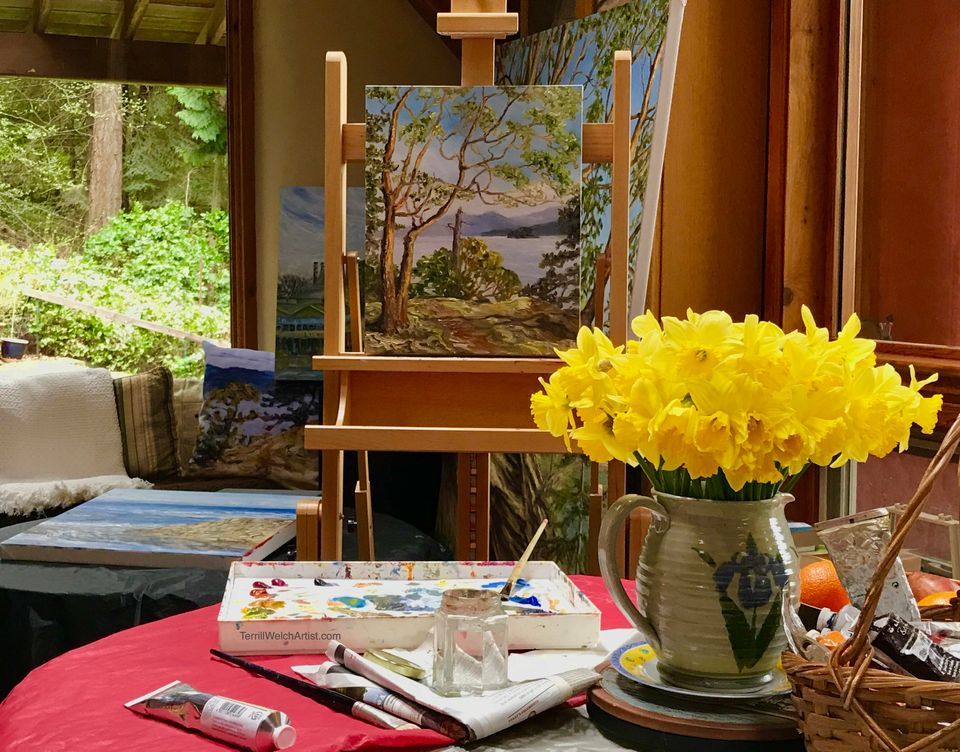
Spring is here isn’t it? Almost everywhere the water is flowing and the seedlings spouting... even if through fresh snow in some locations, in Canada at least. This is a time of turnover for the Terrill Welch Gallery as I pack up and return the winter studio to its home location and prepare for the first exhibition of the season. It is a time when I take a few moments to catch my breath, maybe go to the city to visit a few museum galleries and hangout with family. It is a time when I purchase new rack cards, post cards and business cards for the summer season. It is a time when I update and verify my google map listing and get galley exhibition events into BC’s Guide to Arts & Culture. It is a time when I take paintings into a photographer studio to get images for high-end art prints that will then be marketed and sold by a Vancouver Island regional business that is connected to the tourism trade. It is a time when I review the five year business plan and reset my intention for the year through to first quarter of 2020.
Yet, there is still painting to do! But it can be done with fresh daffodils on the table.

New Release...
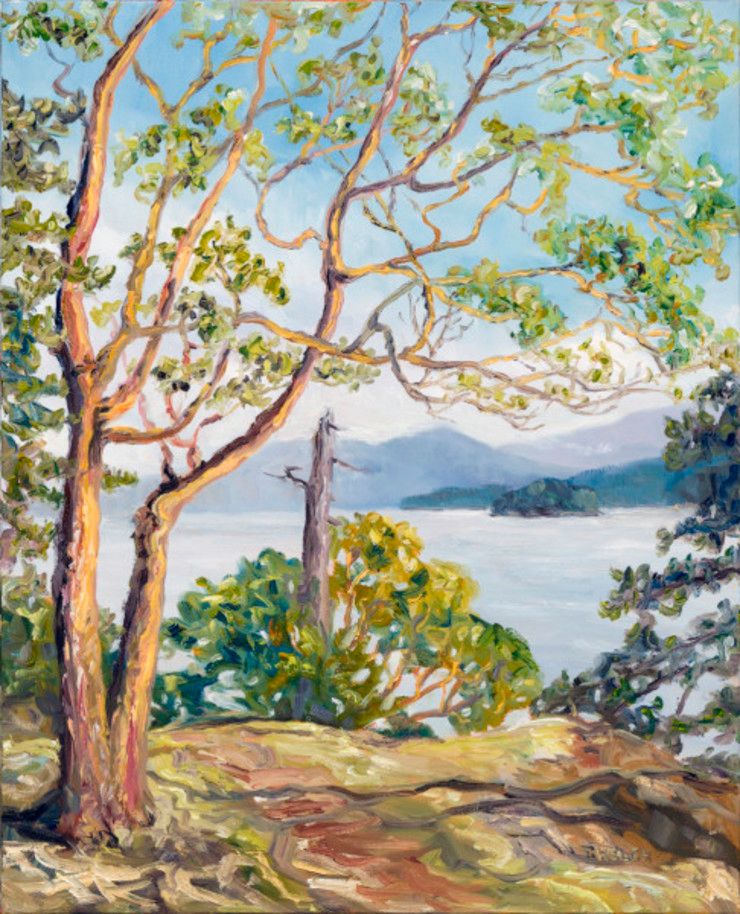
Seaside Trail After The Rain by Terrill Welch | Artwork Archive
Glistening light breaks through the clouds and leaps ahead of me on the trail. Is it now or a while ago or someplace in between? Maybe it really doesn't
There are still long walks to be had to gather reference material and stretch myself fully into our surrounding landscape.
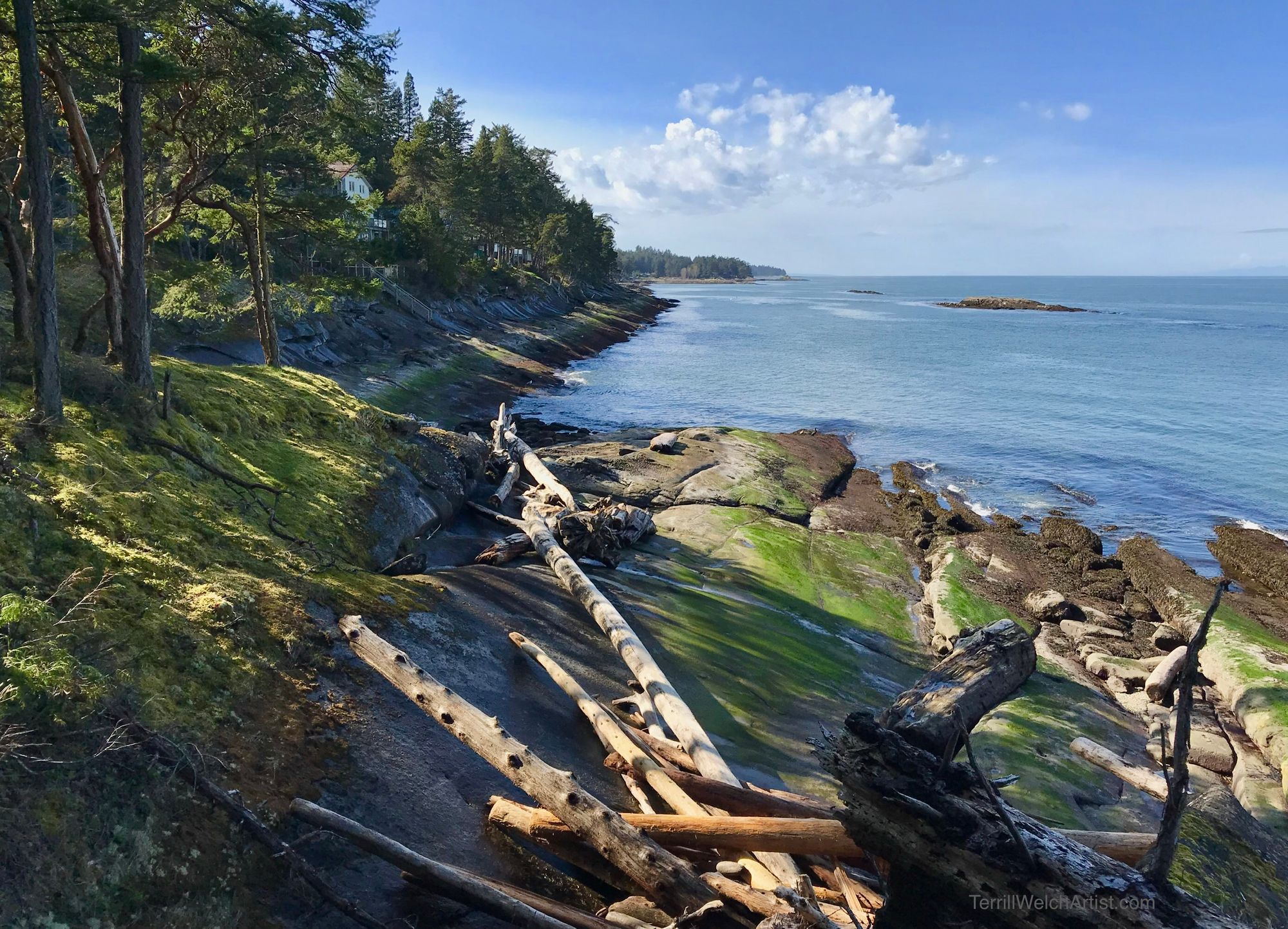
The views never seem to run out of new pearls to offer my muse.
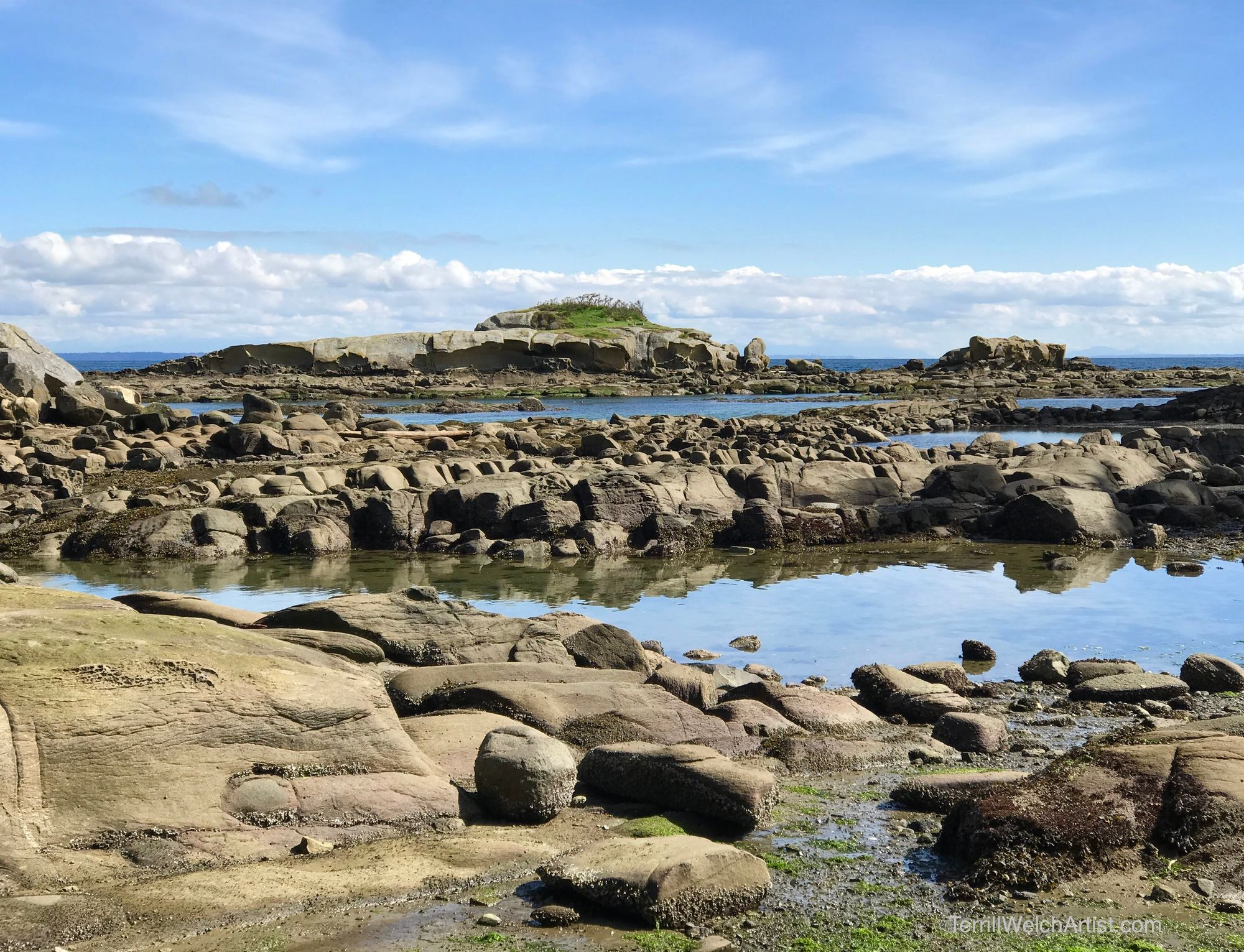
There is still to time to take a deep dive into a historic painting, or three, using images taken for study purposes which leads us nicely into the Opinion Piece section. But first, let’s have a closer look at few works from my visit to the Vancouver Art Gallery...
Art Study
I had reason to be in the Vancouver Art Gallery recently and I was standing studying this painting which is in the Gallery’s permanent collection. “Spring Thaw, Quebec Village” 1934 by Clarence Gagnon. A woman came up beside me and whispered - it is my most favourite painting in the show.
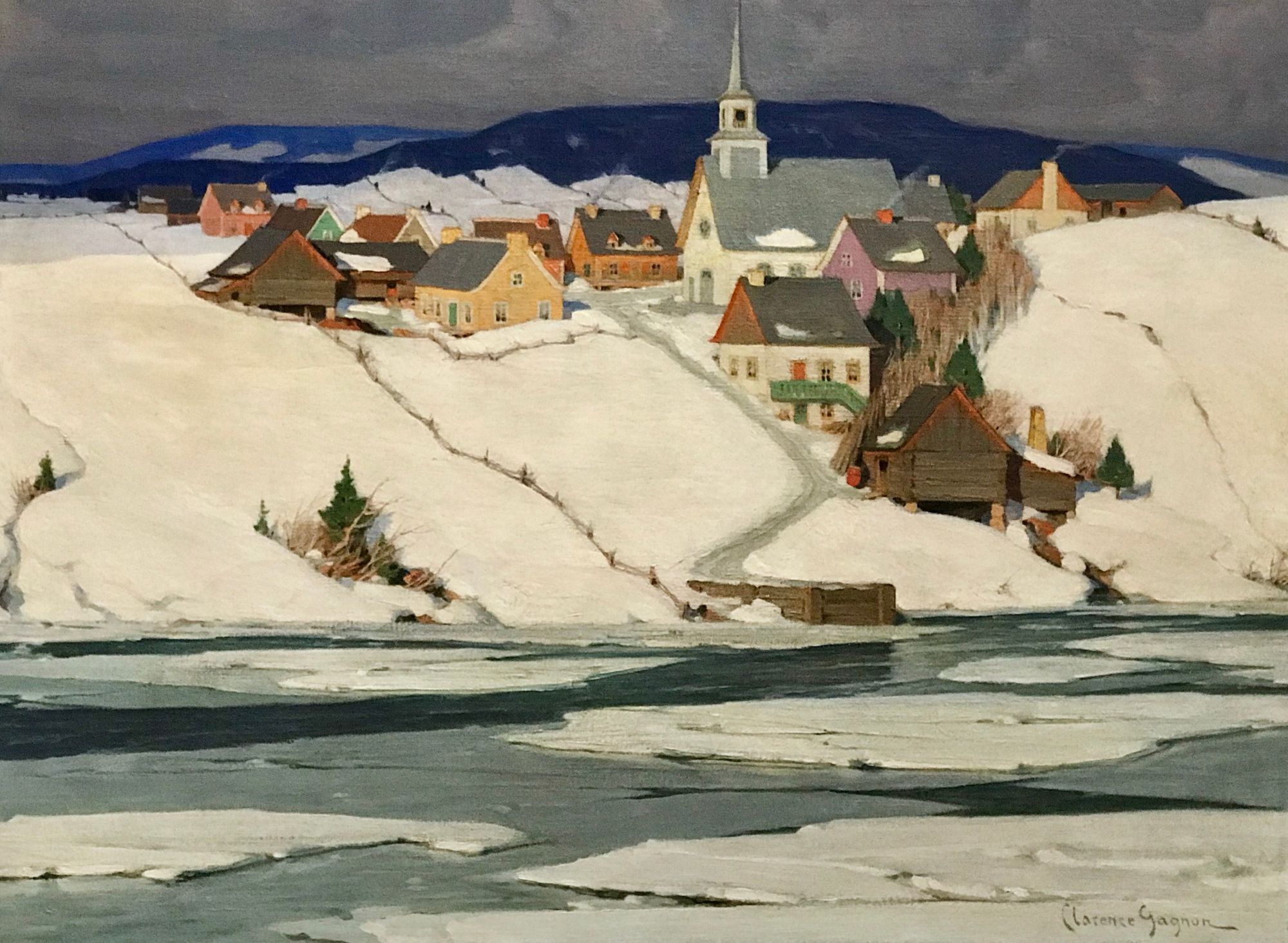
If you have never survived a lengthy Canadian northern winter, you can be forgiven if you missed the relief, celebration and hope that the gallery viewer and I felt as we stood in front of this painting. Spring! Gagnon’s skillful use of light and colour leaves no doubt that the snow is getting crunchy as it begins to freeze again after a day of melting. The memories in our cheeks are as pink and as cheerful as the houses on the hill as we imagine catching our breath in a misty exhale from afar. We are inside the painting, living, just for a short while, in a Quebec village in early spring 1934 with the long shadows hanging on the hills, holding our eyes on the village. I wonder if anyone we know will come out of one of those houses and walk towards the church?
It took me a while to figure out why there was a well-used path going down to water. Can you guess? I will post the answer below but do try to guess.
Note: I did a search online to see if I could find an image of this painting because the very top last inch or so of the work is cropped out because it was shadowed by its frame. I had no luck so we will have to use this image I took for art study purposes. I just wanted you to know Gagnon DID included the top of the steeple in the painting.
Now for the answer to my question using another of Gagnon’s paintings from wiki art painted the following year.
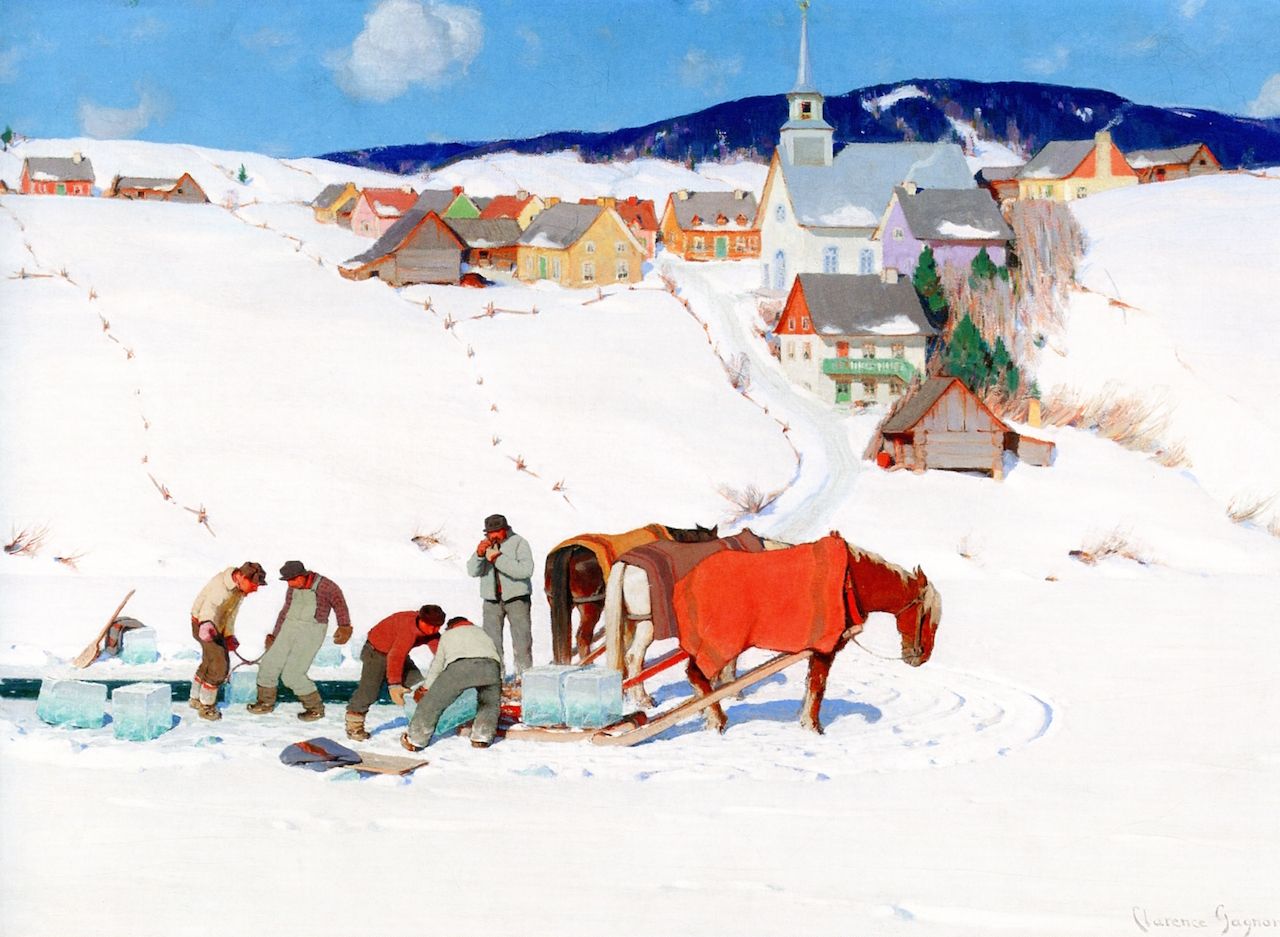
Just for extra fun you may want to look closely and see how Gagnon has taken license with the village homes from one painting to the next.
Next, I have another painting for us to study from the Vancouver Art Gallery show “French Moderns Monet to Matisse” organized by the Brooklyn Museum.
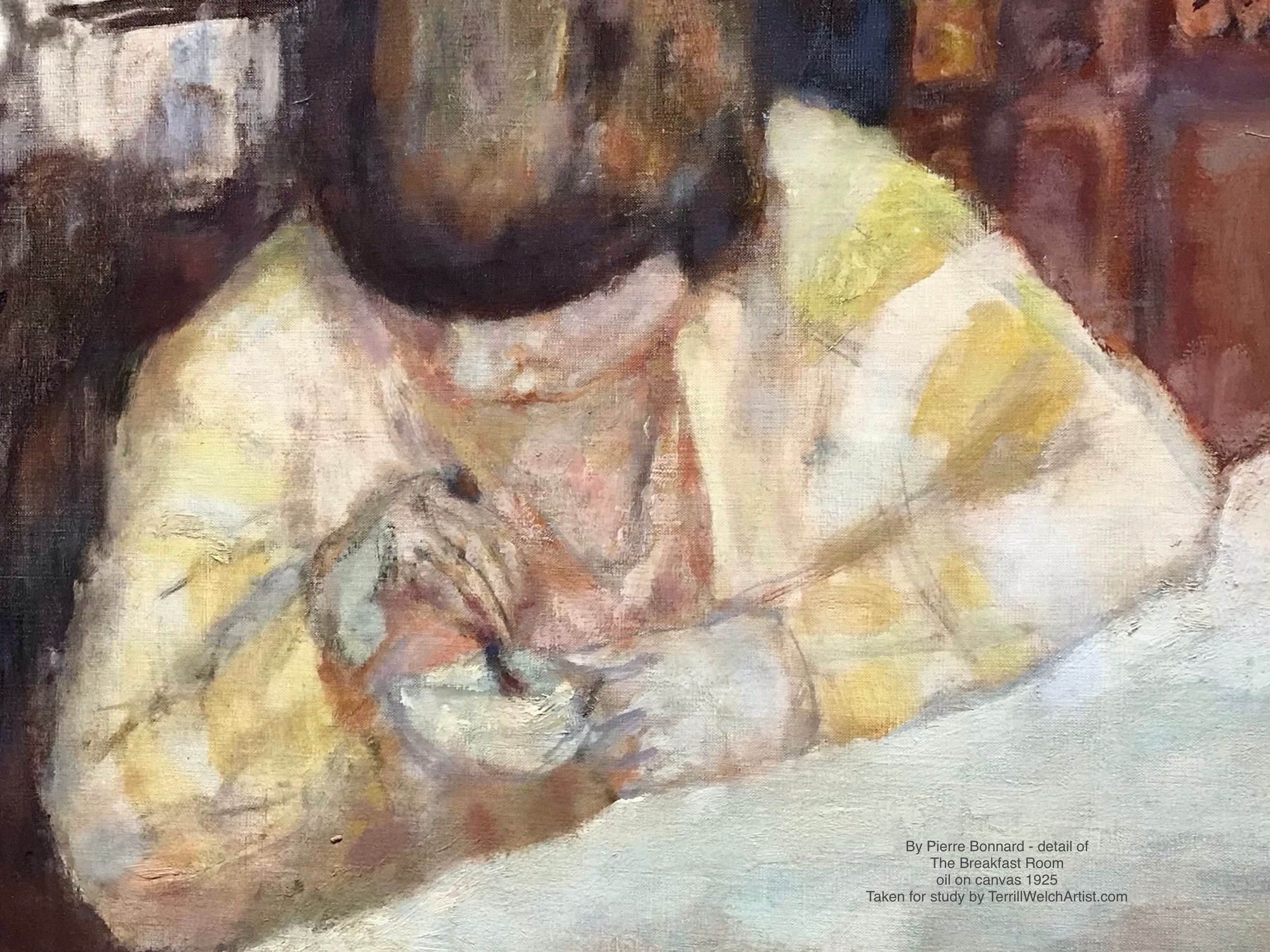
I have started with the detail of a woman, the wife of the painter, having her morning tea. The painting is by Pierre Bonnard, painted in 1925 and titled “The Breakfast Room”. The whole canvas is in the image below and the painting is 25 3/4 inches by 42 1/2 inches.
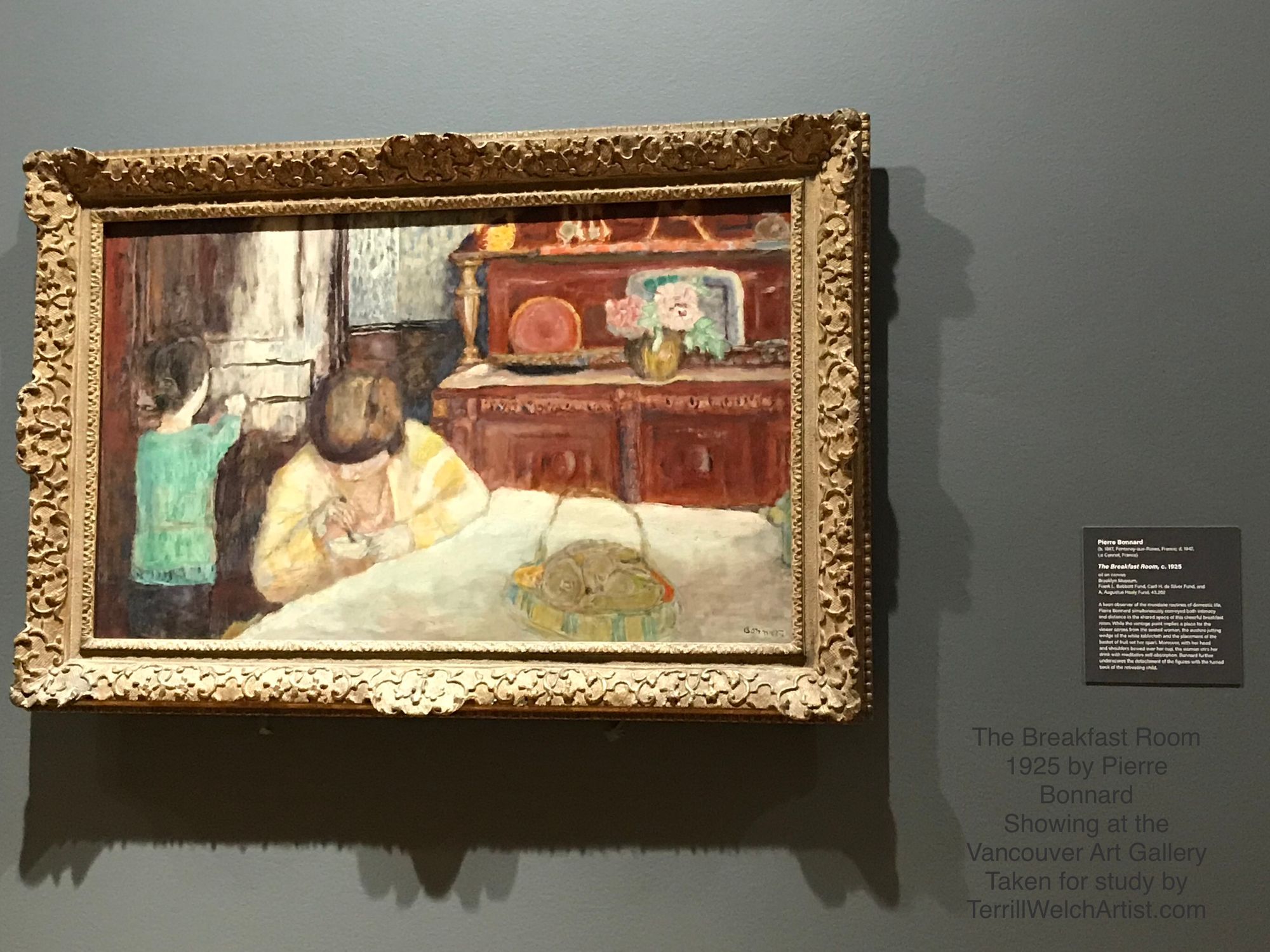
In the review and commentary I read about this painting, much is made about the isolation or detachment of this figure from the viewer. But this isn’t how I experience the painting at all which might be why I was compelled to take this close up.
I was drawn into this painting with almost the embarrassment of having walked past a street-level window where the curtains were pulled back giving me a glimpse into the private lives of the inhabitants. But there was a place to sit nearby in the gallery museum and still view this painting. So I sat. The more I sat, the more comfortable I became with having been invited into this intimate space where no explanation or attention needed to be given or offered to the viewer. I began to feel the familiarity of routine, the privacy of my own thoughts shared in this mutual space with the painter and the figures. The painting’s many soft edges creating a sensory seeing, a visually constructed and imagined view all at the same time. These morning rituals, as we know, are often repeated and yet time can never be sustained. The outside world will beckon with its demands and we will, finish our tea, put down our paints and face the day with whatever it brings and asks of us. But, for as long as I can keep my eyes within the frame of the painting, nothing but this private interior moment is required of me - or of them. What a gift!
How do you experience this painting? The same or different?
Now for our final painting of this threesome art study...
I have been examining a detail of a painting from the show by an artist that really needs no introduction in my posts - Emily Carr. The whole painting is only 16 x 22 inches and this is 2/3 or better of that. Emily Carr’s tension between form and light and shadow never fails to intrigue me. This work is a perfect example of putting down a brushstroke and leaving it alone. The results are invigorating and embrace the essence of our west coast landscape.
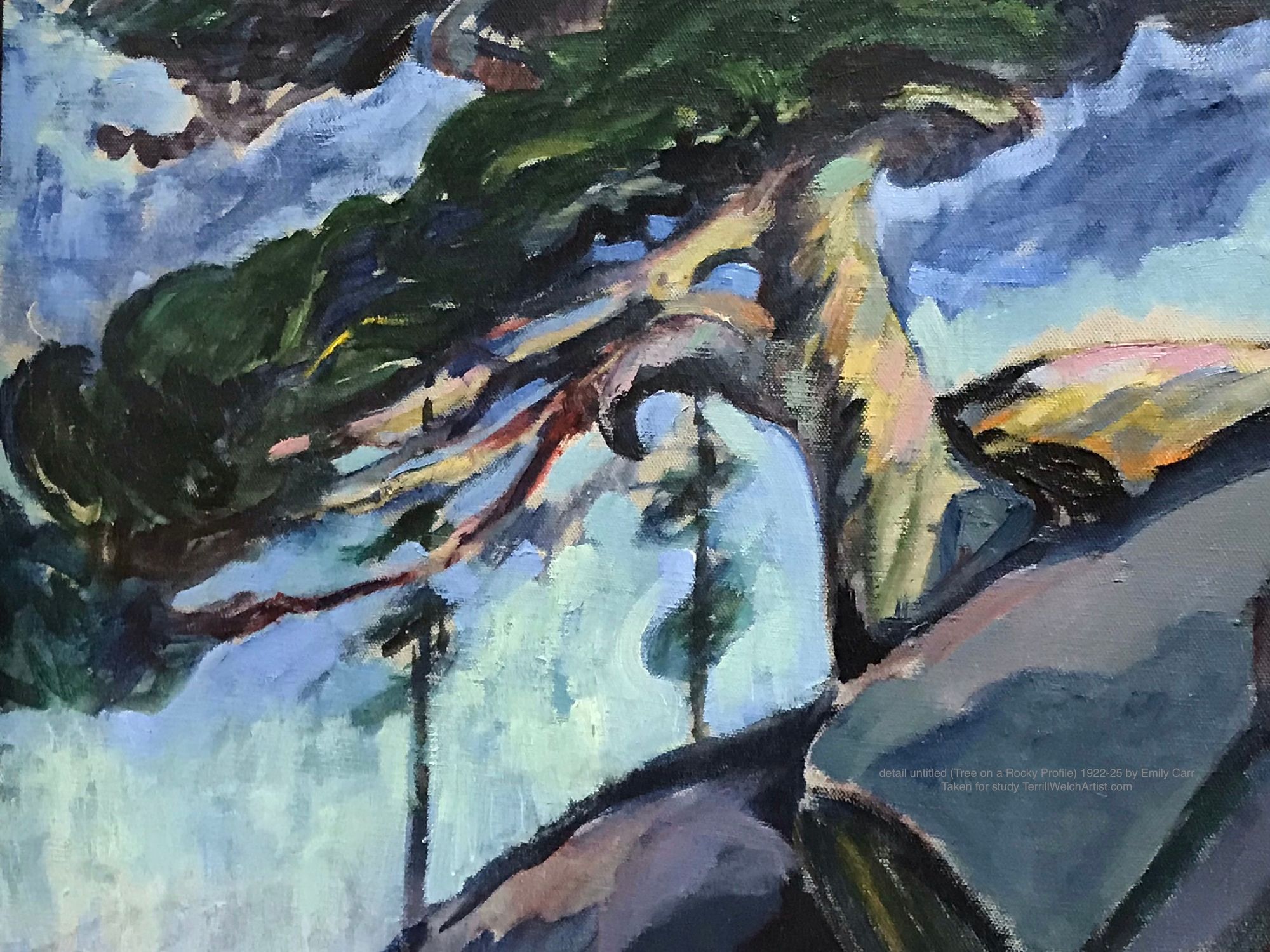
This painting is in the “Affinities: Canadian Artists and France” show at the Vancouver Art Gallery which is on exhibit until May 20, 2019. Emily Carr went to art school in France for a little over a year from July 1910- September 1911. Before she left she had two paintings accepted into the Salon d’Automne along with other painters familiar to us such as Matisse, Rouault, Valadon and Vuillard (and also over 600 others as this was a big show). This was the time of the post-impressionist and Carr quickly developed a kind of colour shorthand for translating visual information. It is also where she learned to paint with oils having used primarily watercolours before coming to France. The detail I share here, for me, holds evidence of that French influence but also the beginnings of vigorous expression that we now recognize easily as an “Emily Carr” painting.
Emily Carr’s paintings and writings have been a profound grounding to my life as a landscape painter. One note of significance is that I now have two of my paintings in a collection with one of her large oil paintings and those of some of the Group of Seven painters. Many of you will know this story of course because it is a favourite to tell 😉 So I shan’t bore you with it again but instead include a link for those that haven’t and want to give it read: https://creativepotager.com/2012/10/22/what-do-original-paintings-of-emily-carr-a-y-jackson-lawren-harris-and-terrill-welch-have-in-common
So there you have it! I would like to offer a special thanks to the Vancouver Art Gallery for bringing in this Brooklyn Museum collection and pairing it with Canadian works from the same time period. If you would like to have a look for your self...
Vancouver Art Gallery
Life as an Artist
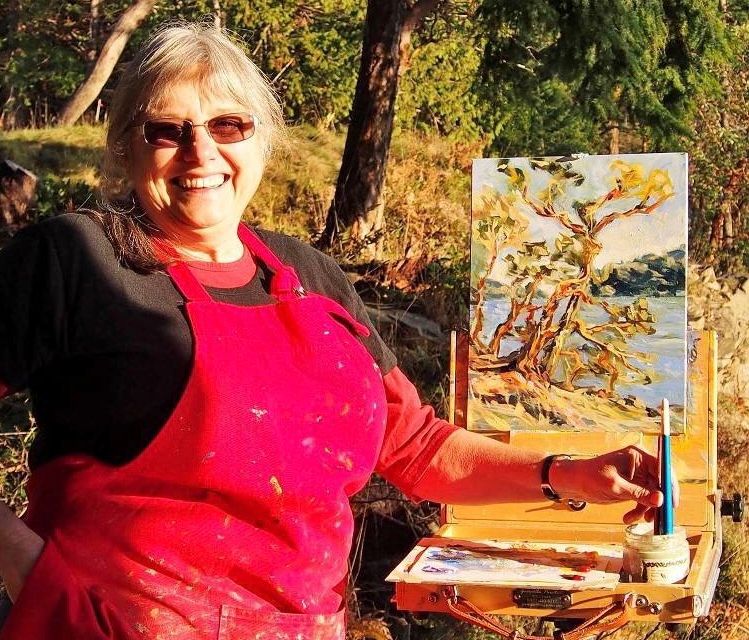
In someways it would be so much easier to play it safe... painting away in my home studio and not showing the canvases to anyone... a glorious hobby. I do think about it on hard days. But then I stretch past those moments and swing my leg over the edge of what seems impossible.
What about you? If you had to say on a scale of 1 to 10, with one being “Playing Safe” and ten being “Risk Taker” what would you say? Does your behaviour change from one situation to another?
Spring and Summer 2019
New! - watch the video introduction to the boutique Art of Terrill Welch Gallery Spring and Summer Season for 2019...

Terrill Welch Gallery Spring and Summer Season for 2019
Visit the Terrill Welch Gallery at 478 Village Bay Rd. Mayne Island B.C. Canada from the May to September long weekends Friday, Saturday and Sunday 11-4 or a...
Opinion Piece - Slow Art
According to Sarah Cascone, with ArtNet, research shows that the average viewer spends just 27 seconds viewing an artwork in a gallery or museum. There is a movement afoot to change this with events like Slow Art Day designated as April 6th for 2019. Founded in 2009 by Phil Terry, the CEO of the consulting firm Creative Good, Slow Art Day asks museum-goers to spend five-ten minutes looking at a single work of art, focusing intently on the piece before them. The challenge seems like a modest enough request. However, I can say from experience that with visitors milling around like cattle being prodded into an auction shoot, staying with one work of art for 10 minutes seems like a long time. Also, most seating has disappeared to keep the traffic of bodies flowing. Yet, it can be done and should be done, for the sake of ourselves, if not for art.
So here are my tips for Slow Art viewing:
- Read a little about the show before you go, just to give you a wee bit of context and it will save reading the wall mounted introductions.
- Make sure you have taken care of eating, bathroom and as many tasks as possible so as not to be disrupted (even by yourself) before you enter the gallery.
- If you can, plan a less busy time to view art slowly. Sometimes easier said than accomplished but always worth trying.
- Now that you are in the museum walk slowly and pause before a work that deeply intrigues or even disturbs you. Move back as far as comfortable and let the other visitors pass in front of you for a while. This will help to keep you from feeling rushed or like you are hogging the space right in front of the Art. Ask yourself questions like what is happening in the work? What do I notice most? What feelings does it bring up or memories? If I could only use three words to tell someone about this painting, what would they be? Or make up your own questions and even write them down so you don’t have to try and remember them while you are also observing.
- Try walking from back to front of the show at least once. We tend to see differently when we reverse a direction.
- What else should we add to our Slow Art viewing? There is always room for new ideas in almost every practice and viewing art slowly is a practice rather than a result.
I could also suggest that a good way to have a Slow Art Day is to come to a small Mayne Island Gallery you know and book a private viewing.... but that might be a little too cheeky. ;)
What I am reading
"The Many Deaths Of a Painting" is an article about the history of a specific abstract painting “Who’s Afraid of Red, Yellow, and Blue III” by Barnett Newman, complete with video supplements covering events that at times left me in jaw-gaping disbelief! I am placing it at the end of this issue because once you follow the link you may not return again, until next issue. Enjoy!
The Many Deaths of a Painting - 99% Invisible
All the best of the holidays and beyond!
Canadian Contemporary Artist Terrill WelchLandscapes and more by impressionist painter Terrill Welch
Canadian landscape painter, Terrill Welch, exposes the mystery in an ordinary day, reminding us that there is only one moment – this one.

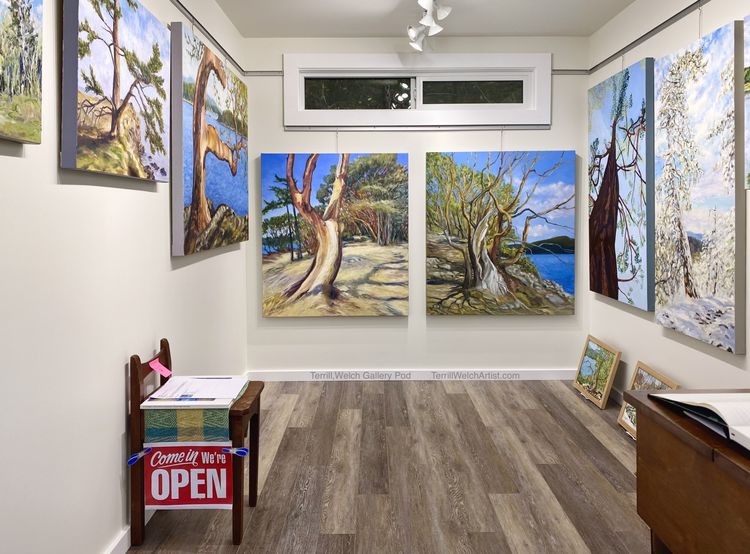
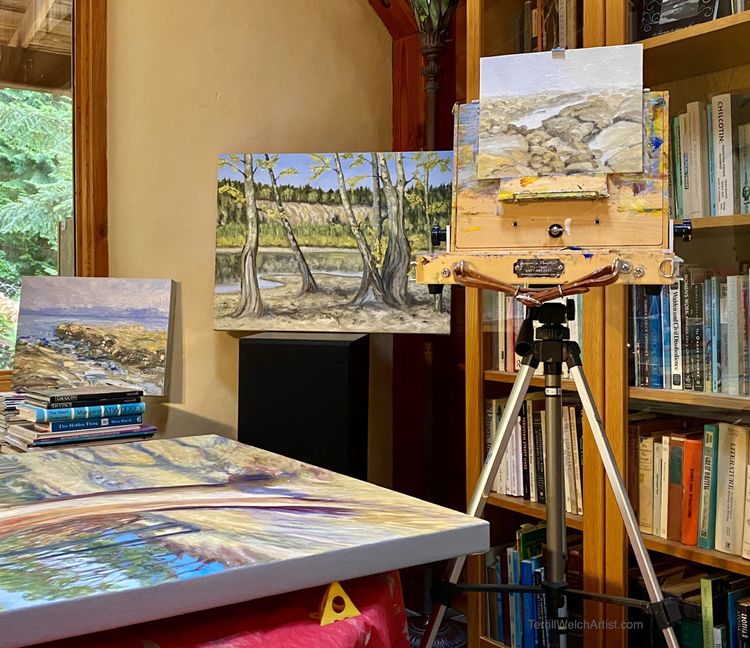
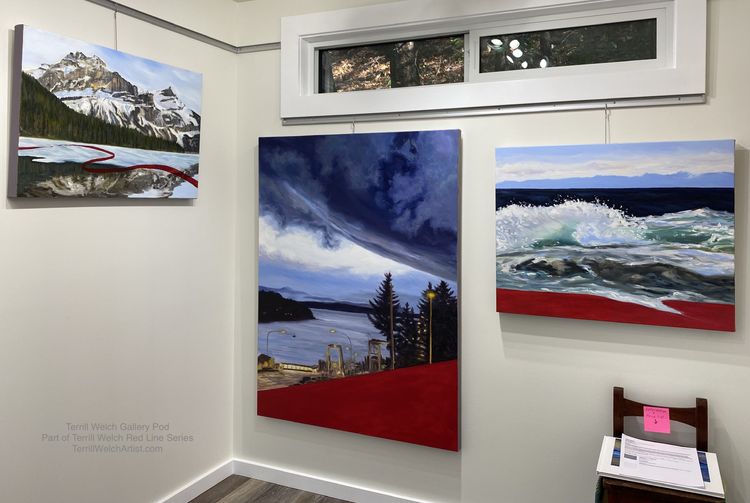
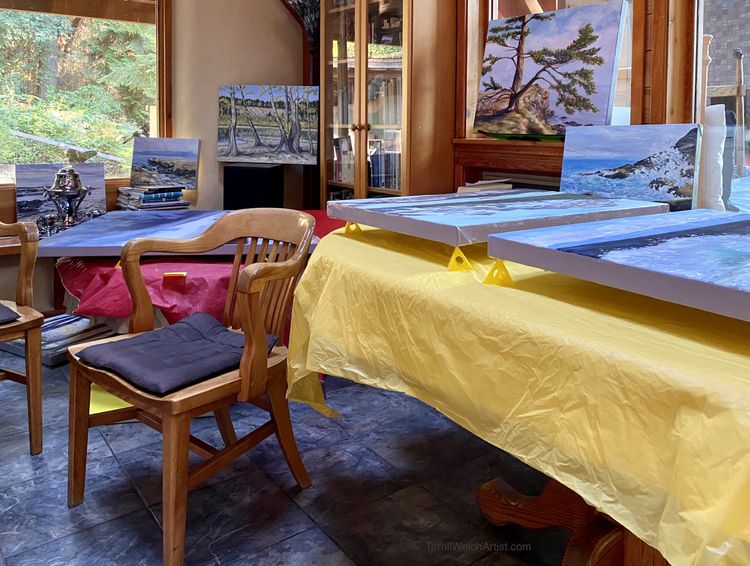
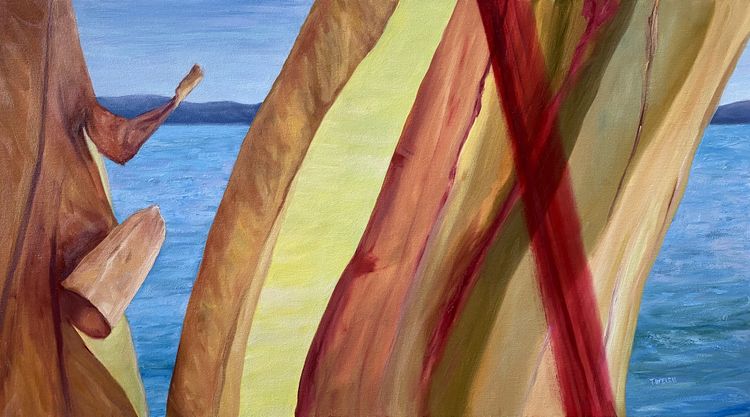
Member discussion